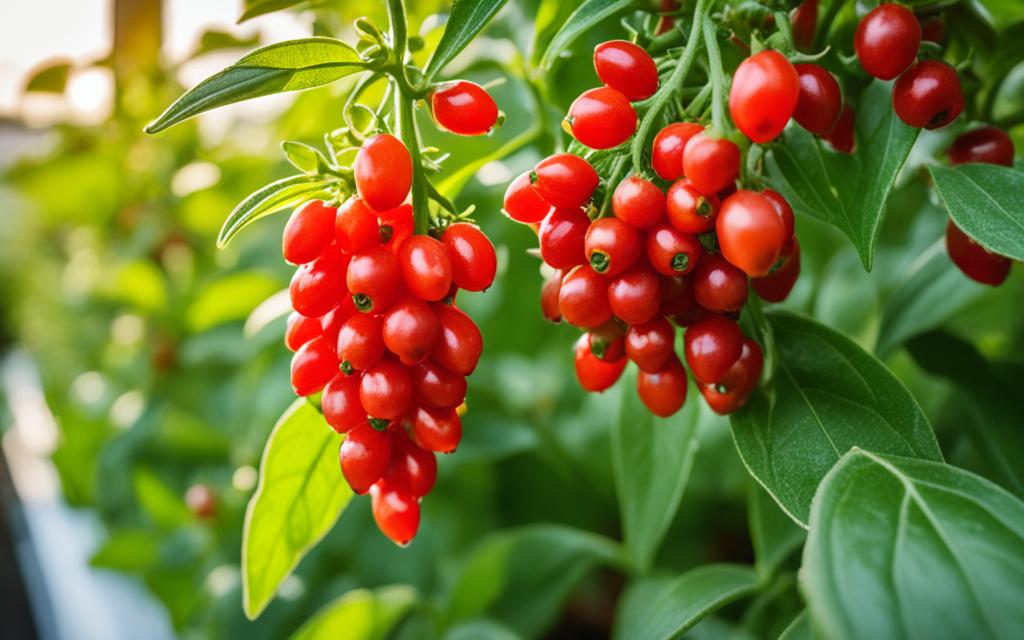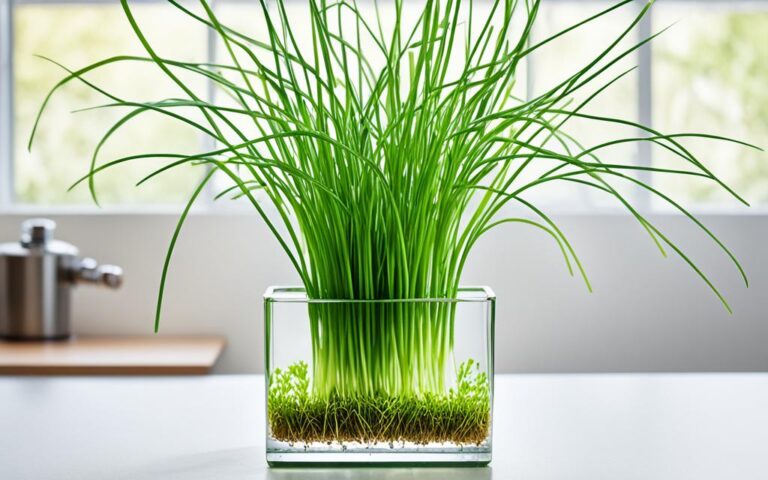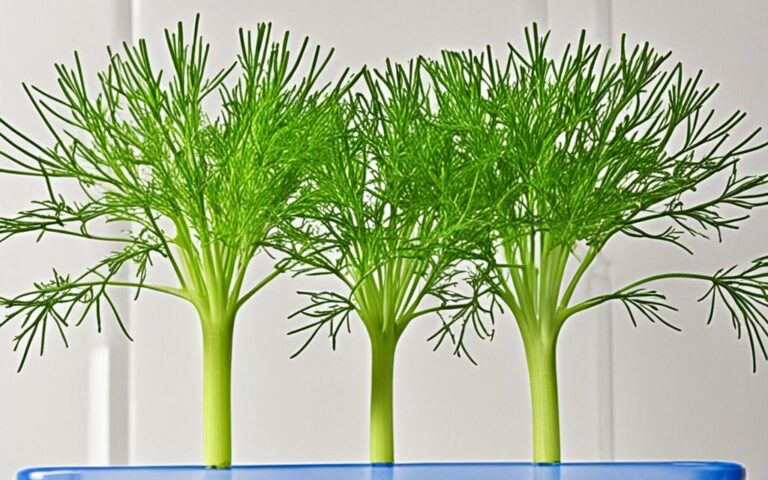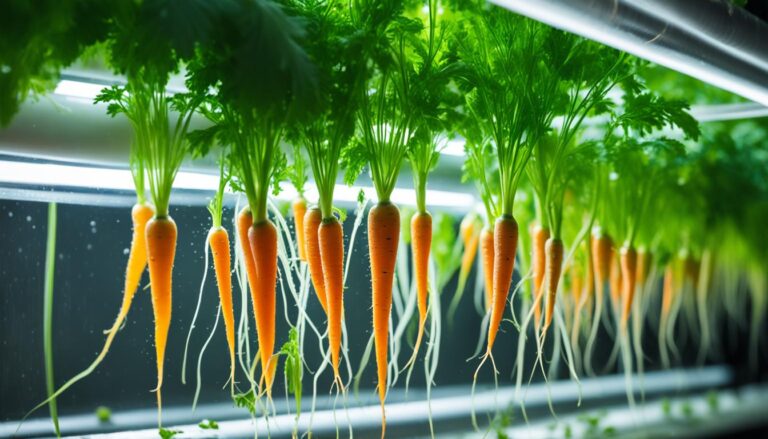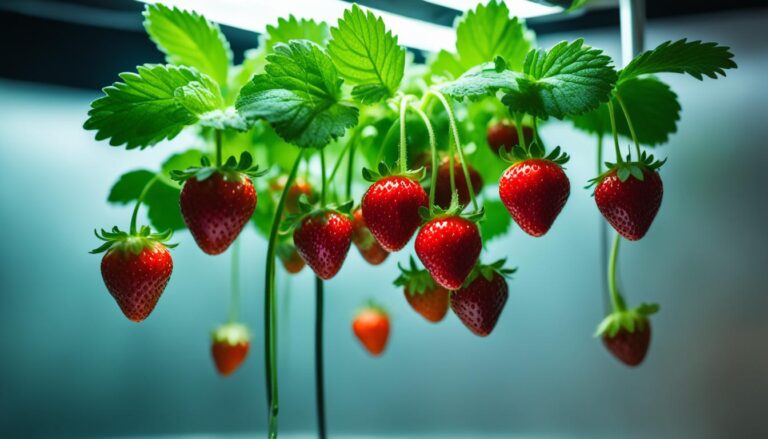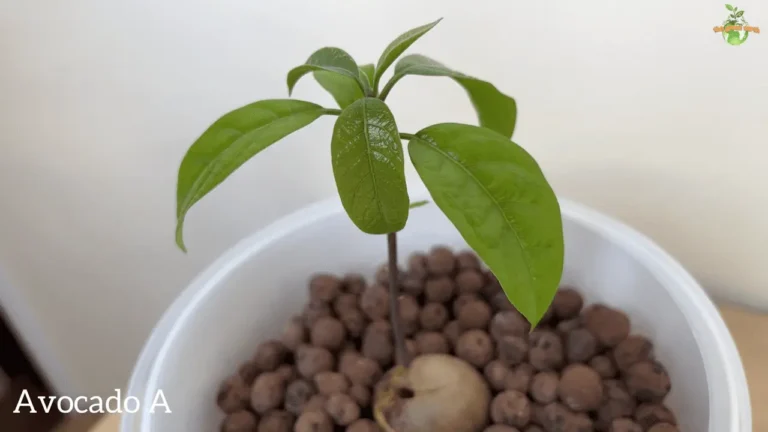Hydroponic Goji Berries: Growth & Benefits Guide
Did you know a single acre of hydroponic goji berry plants can produce up to 30,000 pounds of superfruit each year? Hydroponic goji berries are loved for their health benefits and are great for small farmers and health lovers. This guide will show you how to grow goji berries hydroponically and get the most out of this amazing crop.
Key Takeaways
- Hydroponic goji berry cultivation allows for year-round production and optimal growing conditions
- Goji berries are packed with essential vitamins, minerals, and antioxidants, making them a highly nutritious superfruit
- Diverse goji berry varieties can be grown hydroponically, each with unique characteristics and benefits
- Carefully designed hydroponic systems, nutrient management, and environmental control are crucial for successful goji berry cultivation
- Proper harvesting, post-harvest handling, and marketing strategies can maximize the value of hydroponic goji berry production
Table of Contents
Introduction to Goji Berries
Goji berries are known as the “superfood of the East.” They have a long history that goes back thousands of years. These berries come from the Himalayan region of Asia. They have been a key part of traditional Chinese medicine for a long time.
History and Origins
The goji berry is scientifically named Lycium barbarum. It belongs to the Solanaceae family, which includes tomatoes and eggplants. This plant is a shrub that lives for many years. It grows the berries that look like oblongs, which have been grown in China for many generations.
In Asian cultures, goji berries are highly valued for their health benefits. They have been mentioned in ancient texts and used in traditional remedies. The plant can grow well in dry, mountainous areas. This has helped it spread across China, Tibet, and other parts of Asia.
Nutritional Benefits
Goji berries are called a “superfood” because of their nutritional value. They are full of important vitamins, minerals, and antioxidants. These include:
- Vitamin A, C, and E
- Iron, zinc, and selenium
- A lot of antioxidants
Eating goji berries can help with your health in many ways. It can boost your immune system, help control blood sugar, and lower the risk of some diseases. The antioxidants in goji berries fight inflammation and protect against free radicals.
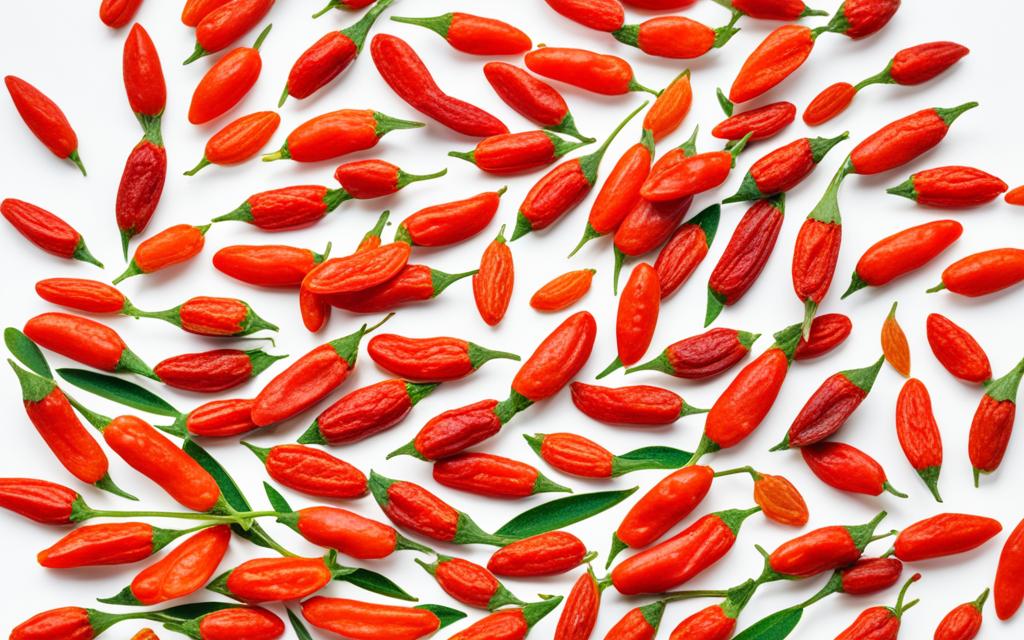
“Goji berries have been used in traditional Chinese medicine for thousands of years, and modern research is just beginning to uncover the incredible health benefits of this ancient superfood.”
Varieties of Goji Berries for Hydroponic Growing
Choosing the right goji berry varieties is key for success in hydroponic growing. There are two main types, Lycium barbarum and Lycium chinense. But not all are great for indoor growing.
Some top goji berry varieties for hydroponics are:
- Crimson Star: A compact, bushy plant with high yield potential and tolerance to hydroponic conditions.
- Phoenix Tears: A vigorous variety with a trailing growth habit, perfect for vertical or hanging setups.
- Big Lifeberry: Known for its large, flavorful berries, it thrives in various hydroponic conditions.
When picking goji berry varieties, think about plant size, growth, yield, and how they handle indoor conditions. The right goji berry cultivars can greatly improve your indoor goji berry growing.
“Goji berries are a versatile and nutritious crop that can thrive in hydroponic systems, provided you select the right varieties for your setup.”
Setting Up a Hydroponic System for Goji Berries
Goji berries are loved for their bright color and high nutritional value. They can grow well in many hydroponic systems. Growers can pick from several methods, each with its own benefits for hydroponic systems for goji berries.
Types of Hydroponic Systems
The top best hydroponic systems for growing goji include DWC, NFT, and ebb and flow systems. Each has its own way of handling water and nutrients, plant spacing, and making harvesting easier.
- Deep water culture (DWC) systems give plants a steady supply of nutrient-rich water, helping them grow fast and produce a lot.
- Nutrient film technique (NFT) systems use a thin film of nutrient solution that flows over the roots, making it easy for plants to get water and nutrients.
- Ebb and flow (flood and drain) systems flood and drain the growing area, which is similar to the natural wet and dry cycles that goji berries like.
Growers should think about what they have available, the space they have, and what they want to achieve. This will help them pick the best goji berry hydroponics setup for their needs.
Equipment and Materials Needed
To grow hydroponic goji berries, you’ll need special hydroponic equipment for goji berries and supplies for growing goji hydroponically. Here’s a list of what you’ll need:
- Grow trays or containers
- Grow media, like coco coir or perlite
- Air pumps and water pumps
- Nutrient solutions made just for goji berries
- pH and TDS/EC meters to check the water quality
- Good lighting systems
Having all the necessary materials for hydroponic goji berry cultivation ready is key to creating the best growing conditions for these berries.
Planting Goji Berries Hydroponically
Growing goji berries hydroponically offers two main ways: starting from seeds or using transplants. Each method has its own benefits and things to consider.
Starting from Seeds
Starting with goji seeds takes more time but is fulfilling. Plant them indoors 6-8 weeks before the last frost. They need lots of light to grow strong.
With patience, these seeds can lead to a harvest in 2-3 years.
Goji Berry Transplants
Choosing goji berry transplants can make the first harvest come faster, often in the first year. Before putting them in the hydroponic setup, get the young plants ready. This helps them grow well and adapt quickly.
Whether from seeds or transplants, success in hydroponic goji berry farming depends on the right care. Knowing what these plants need helps gardeners propagate goji hydroponically. They can enjoy a lot of goji berry transplants or starting goji berries from seed.
Nutrient Requirements for Hydroponic Goji Berries
Growing goji berries hydroponically means paying close attention to their nutrient needs. These plants are easy to care for but still need specific nutrients for growth and fruiting.
A balanced nutrient solution is crucial for goji berries. They prefer a slightly acidic pH, between 6.0 and 6.8. Keeping the electrical conductivity (EC) between 1.2 and 2.0 mS/cm is also key for meeting their goji berry nutrient needs.
Feeding goji berries too much can cause problems like leaf burn and lower fruit quality. Growers should be careful not to overfeed them. Regular checks and adjustments of pH and EC levels are vital to keep the optimal pH and EC for hydroponic goji in check.
| Nutrient Parameter | Optimal Range |
|---|---|
| pH | 6.0 – 6.8 |
| Electrical Conductivity (EC) | 1.2 – 2.0 mS/cm |
By keeping a close eye on nutrient levels, hydroponic goji berry growers can help their plants flourish. This ensures a bountiful, high-quality harvest.
Environmental Conditions for Optimal Growth
To grow thriving hydroponic goji berries, the right environment is key. Goji plants do well in settings that feel like their natural home. This means focusing on lighting, temperature, and humidity.
Lighting Requirements
Goji berries need lots of sunlight, about 6-8 hours a day. In hydroponics, you can use grow lights like LED or HPS to get enough light. Make sure your lights give the plants the right amount of PAR to help them grow and produce fruit.
Temperature and Humidity
Goji berries love warm, dry places with a temperature of 70-85°F (21-29°C). They can handle some temperature changes but not extreme ones. Keeping the humidity at 50-70% is also important for growing goji berries. You might need to use systems to control the climate, like heaters, coolers, and dehumidifiers.
“Providing the right lighting, temperature, and humidity is key to growing healthy, high-yielding hydroponic goji berries.”
By managing these environmental factors well, growers can make the perfect setting for their goji berry plants. This helps them grow and produce lots of fruit.
Hydroponic Goji Berries
Growth Stages and Care
Goji berry plants grown hydroponically go through a fascinating growth cycle. They start from germination and end at the final harvest. It’s crucial to keep a close eye on their water, nutrients, and environment at each stage.
The journey starts with seed germination, where tiny sprouts appear and grow into strong plants. As they get older, they enter the flowering stage, showing off bright flowers that lead to the goji berries. Regular pruning and training help shape the plants and increase fruit production.
Keeping the right temperature, humidity, and light is key for the goji berries. Growers need to watch these factors closely and adjust them as needed. They also must keep pests and diseases away to protect the plants and get a good harvest.
| Growth Stage | Key Care Requirements |
|---|---|
| Germination | Optimal moisture, temperature, and lighting |
| Vegetative Growth | Proper nutrient balance, regular monitoring |
| Flowering | Pruning, training, and pest/disease management |
| Fruit Development | Precise environmental control, careful harvesting |
By knowing the growth stages and caring for them well, hydroponic goji berry growers can get the most out of these amazing plants. This leads to a big and healthy harvest.
Pruning and Training Hydroponic Goji Plants
Keeping a hydroponic goji berry garden healthy and productive means regular pruning and training. Goji berry plants can get too big and wild if not kept in check. So, it’s important to focus on pruning hydroponic goji berries and training goji berry plants. This ensures good goji berry plant management.
Pruning is key to keeping goji berry plants neat and easy to manage. Growers should cut back long or stray branches, remove dead or damaged parts, and encourage side shoots. This makes the plant bushy and well-shaped. It also helps with air flow and light, which can increase fruit production.
Training goji berry plants is also vital for getting the most out of them. Using trellises or cages helps keep the plants upright and makes picking berries easy. This method stops the plants from spreading out too much as they grow.
“Proper pruning and training of hydroponic goji berry plants can make all the difference in achieving a bountiful harvest.”
By pruning and training regularly, hydroponic goji berry growers can keep their plants in top shape. This ensures a steady supply of these healthy superfruits.
| Pruning Tips | Training Tips |
|---|---|
|
|
Pest and Disease Management
Growing hydroponic goji berries has its own set of challenges with pests and diseases. Growers must watch closely to spot and fix common issues. Aphids, spider mites, powdery mildew, and root rot are just a few pests and diseases that can harm these valuable crops.
Common Pests and Diseases
Aphids and spider mites are common pests that harm hydroponic goji berries. Aphids suck the sap, while spider mites cause leaves to turn color and grow poorly. Powdery mildew, a fungal disease, forms a white coating on leaves and stems. Root rot, caused by pathogens, can make plants wilt and die if not treated.
Organic and Chemical Control Methods
To keep hydroponic goji berries healthy, growers use organic and chemical methods. Organic options include insecticidal soaps, neem oil, and beneficial insects like ladybugs. For big pest or disease problems, growers might use specific pesticides or fungicides. Always follow the label and be safe.
An integrated pest management (IPM) plan is key for handling pests and diseases in hydroponic goji berries. This plan uses cultural, biological, and chemical controls. Regular checks, good growing conditions, and a detailed IPM plan help growers prevent problems and get a good harvest.
Harvesting Hydroponic Goji Berries
Growing hydroponic goji berries is rewarding. It’s time to enjoy the fruits of your labor – the harvest. Knowing when and how to pick these berries is key. It helps you get the most from your plants and have a great crop.
Hydroponic goji berry plants are ready for their first big harvest 2-3 years after planting. In the first years, you’ll get smaller amounts as the plants grow. But as they get older, you can expect to harvest several pounds of berries from each plant.
The best time to pick your hydroponic goji berries is when they turn a deep, rich red. This is usually in late summer to fall. It’s best to pick them by hand or with pruning shears. This way, you avoid bruising the berries.
Goji Berry Harvest Tips
- Time the harvest when berries are a deep red color, typically in late summer to fall
- Use a gentle hand-picking or pruning shears to snip berries from the plant
- Expect yields of several pounds per mature hydroponic goji berry plant
- Harvest in the morning when the weather is cool to preserve freshness
- Store harvested berries in a cool, dry place until ready for consumption or processing
| Hydroponic Goji Berry Yields | Yield per Plant (lbs) |
|---|---|
| 1st Year | 1-2 |
| 2nd Year | 2-4 |
| 3rd Year and Beyond | 4-6 |
Follow these tips for harvesting hydroponic goji berries to get a lot of high-quality berries. With the right care, these superfood berries can be a great addition to your hydroponic garden.
Post-Harvest Handling and Storage
After growing hydroponic goji berries, it’s key to handle and store them right. These fruits are very delicate and easily damaged. So, we must be careful to keep them fresh.
Drying and Preserving Goji Berries
Drying is a great way to keep hydroponic goji berries fresh for longer. You can dry them in a dehydrator or by laying them out in a cool, dry spot. This removes extra moisture, keeping the berries good for months.
Growers might also freeze or juice the berries. Or, they could make products with them. This way, they keep the goji berries fresh for a long time.
Storing dried goji berries right is important. Keep them in airtight containers in a cool, dark place. This keeps them away from light, heat, and moisture. These things can make the berries go bad fast.
“Careful post-harvest handling and storage are essential for preserving the unique flavor and health benefits of hydroponic goji berries.”
Goji Berry Recipes and Usage
Hydroponic goji berries are a great addition to many dishes. They are sweet and savory, offering a unique taste and health benefits.
One way to enjoy them is in fresh salads. They mix well with greens and tangy dressings. You can also blend them into smoothies for a refreshing boost.
For those who love baking, dried goji berries are perfect. Add them to granola, muffins, cookies, or bread. They add a chewy texture and a bit of tartness, along with antioxidants.
| Goji Berry Recipe | Preparation Time | Nutritional Benefits |
|---|---|---|
| Goji Berry Salad | 15 minutes | High in vitamin C, fiber, and antioxidants |
| Goji Berry Smoothie | 5 minutes | Provides a boost of energy and immune support |
| Goji Berry Oatmeal Cookies | 30 minutes | Rich in protein, complex carbohydrates, and healthy fats |
Goji berries are also great as a snack or in herbal teas and tinctures. They add flavor and health benefits to your meals.
Marketing and Selling Hydroponic Goji Berries
Hydroponic goji berries are a great chance for growers to enter the superfood market. You can sell them through various channels. This includes local markets, online sales, and more.
Local Markets and Online Sales
Farmers markets, specialty grocery stores, and farm stands are perfect for selling fresh hydroponic goji berries. People often pay more for high-quality, sustainable goji berries. An online presence through e-commerce and social media can also help you reach more customers.
Adding value-added products like dried goji berries, powders, or goji-infused foods can boost your sales. These items last longer and are easy to ship, making them great for online sales.
“Hydroponic goji berries are a unique and in-demand product that can command premium pricing in the market. By leveraging both local and online sales channels, you can maximize your reach and profitability.”
It’s key to focus on the quality, freshness, and sustainability of your hydroponic goji berries. Talk about their nutritional benefits and how you grow them. This will attract health-conscious buyers and set your products apart.
Conclusion
Hydroponic farming is a great way to grow goji berries all year and reliably. By picking the right varieties and setting up a good hydroponic system, growers can get a lot of these superfruits.
There are many benefits to growing goji berries hydroponically. You have more control over the growing conditions, you get more berries, and you can meet the growing demand for these healthy berries. With the right knowledge and methods, growers can make the most of hydroponic goji berry farming.
If you’re new or experienced in hydroponic farming, the secret to success with hydroponic goji berries is knowing what this crop needs. Keep an eye on pests and diseases, and always look for ways to improve your growing methods. This way, you’ll get a steady and big harvest.
